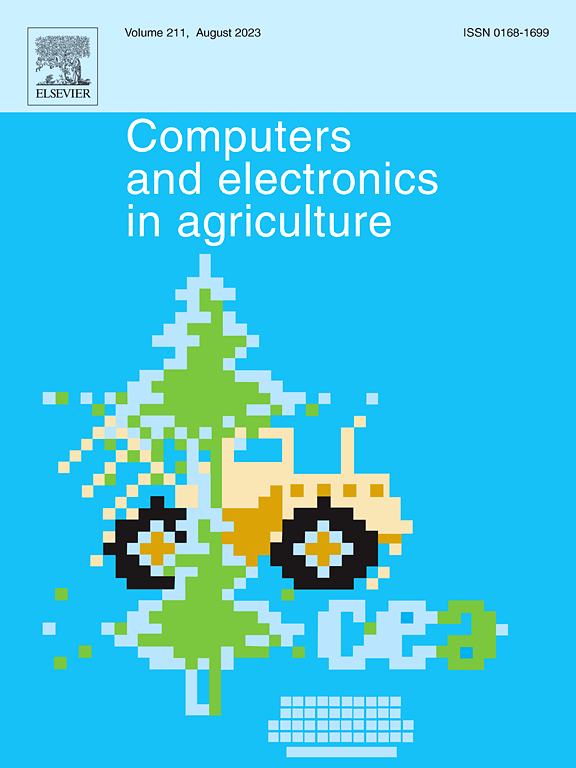Advancing agroecology and sustainability with agricultural robots at field level: A scoping review
IF 8.9
1区 农林科学
Q1 AGRICULTURE, MULTIDISCIPLINARY
引用次数: 0
Abstract
Agricultural robots show a growing potential to improve resource management and reduce the environmental impacts of farming. However, the evaluation of robots’ contribution to support sustainable farming is still lacking. This study specifically reviewed the operationalization of four agroecological principles at the field level: recycling, soil health, biodiversity and synergy. To this aim, a scoping review was conducted on the Scopus database, with a query within titles, abstracts, and author keywords mentioning robots, and agroecology or sustainability. The body of literature was screened to include only open field robots. The resulting 78 documents were coded inductively on three macro areas: (1) academic background, (2) robot operations, (3) contribution to agroecology principles, whether explicitly or implicitly mentioned. The results highlight that robots operationalize agroecology principles through non-chemical and selective weeding to preserve diversity and soil health, lighter designs that reduce soil compaction, and advanced data collection systems to optimize resource use and synergy. Solar-powered robots represent early steps toward recycling, but this principle remains understudied. The discussion expands on the potential of robotics in other innovative approaches for sustainable agriculture, such as agroforestry, conservation agriculture, and novel farming system design. Key challenges include ensuring farmers are enabled to master data collection and management, as well as integrating high-tech robotics with low-tech solutions. These efforts are critical for leveraging agricultural robotics to advance agroecology and sustainability across diverse farming systems.
农业机器人在田间水平上推进农业生态学和可持续性:范围审查
农业机器人在改善资源管理和减少农业对环境的影响方面显示出越来越大的潜力。然而,对机器人在支持可持续农业方面的贡献的评估仍然缺乏。这项研究特别审查了四项农业生态原则在实地一级的运作情况:循环利用、土壤健康、生物多样性和协同作用。为此,我们对Scopus数据库进行了范围审查,并在标题、摘要和作者关键词中查询了机器人、农业生态学或可持续性。文献主体经过筛选,只包括开放领域的机器人。由此产生的78份文件被归纳为三个宏观领域:(1)学术背景,(2)机器人操作,(3)对农业生态学原则的贡献,无论是明确的还是隐含的。结果强调,机器人通过非化学和选择性除草来操作农业生态学原理,以保护多样性和土壤健康,减少土壤压实的更轻的设计,以及优化资源利用和协同作用的先进数据收集系统。太阳能机器人代表了回收的早期步骤,但这一原理仍未得到充分研究。讨论扩展了机器人在可持续农业的其他创新方法中的潜力,如农林业、保护性农业和新型农业系统设计。主要挑战包括确保农民能够掌握数据收集和管理,以及将高科技机器人与低技术解决方案相结合。这些努力对于利用农业机器人在不同农业系统中促进农业生态和可持续性至关重要。
本文章由计算机程序翻译,如有差异,请以英文原文为准。
求助全文
约1分钟内获得全文
求助全文
来源期刊

Computers and Electronics in Agriculture
工程技术-计算机:跨学科应用
CiteScore
15.30
自引率
14.50%
发文量
800
审稿时长
62 days
期刊介绍:
Computers and Electronics in Agriculture provides international coverage of advancements in computer hardware, software, electronic instrumentation, and control systems applied to agricultural challenges. Encompassing agronomy, horticulture, forestry, aquaculture, and animal farming, the journal publishes original papers, reviews, and applications notes. It explores the use of computers and electronics in plant or animal agricultural production, covering topics like agricultural soils, water, pests, controlled environments, and waste. The scope extends to on-farm post-harvest operations and relevant technologies, including artificial intelligence, sensors, machine vision, robotics, networking, and simulation modeling. Its companion journal, Smart Agricultural Technology, continues the focus on smart applications in production agriculture.
 求助内容:
求助内容: 应助结果提醒方式:
应助结果提醒方式:


